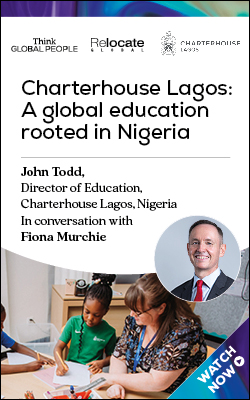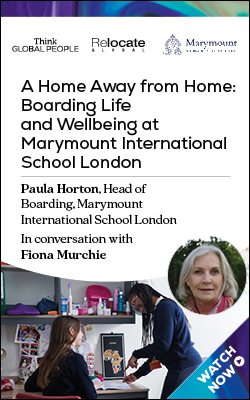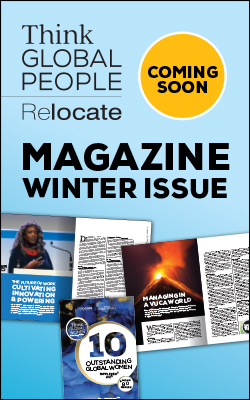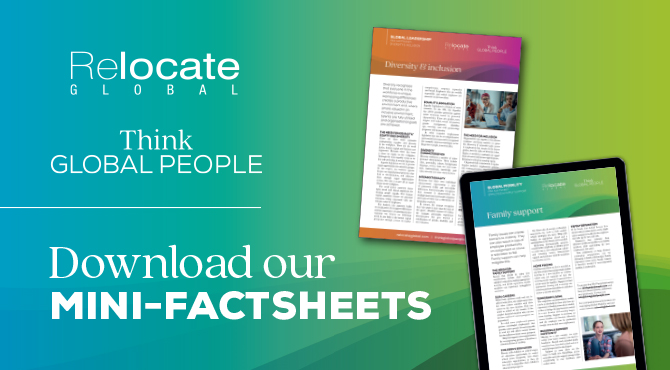The evolving landscape of global mobility: strategy, flexibility and inclusion
In today’s rapidly changing business environment, global mobility is no longer a niche function reserved for executives or specialised roles. It has evolved into a mainstream component of talent management and business strategy, enabling organisations to develop leaders, support business priorities, and foster diverse, inclusive experiences across the workforce. Marianne Curphey spoke with Eileen Mullaney, Vialto, to find out more.

View your copy of the Autumn 2025 issue of Think Global People magazine
Click on the cover to access the digital edition.
As mobility programmes adapt to new trends and pressures, the most forward thinking organisations are rethinking their strategies to align with business needs, cost constraints, and employee expectations. However, more needs to be done. The 2025 Vialto global mobility market survey shows that less than a quarter (23%) of organisations report reaching the “strategic” or “influencer” level, where mobility is integrated into business priorities and proactive in managing risk.

How global mobility programmes can aid business growth – and why they fail
Eileen Mullaney says that traditionally, companies have relied on satisfaction surveys to measure the success of relocation or assignment support. However, organisations are increasingly adopting experience surveys, which can go further by capturing how assignees and their families actually feel throughout the mobility journey.“Experience surveys are particularly valuable because they reveal insights that typical metrics miss,” she explains. “I don't see every company doing them, but they're becoming more and more popular. You might not survey the entire population at one point in time, but you survey a portion of the population every quarter, or every couple of months. These conversations can uncover really interesting insights about your population and about their feelings around the assignment that's not typically captured anywhere else.”One of the most significant causes of assignment failure remains family dissatisfaction. To mitigate this, organisations can offer cultural training, but they can also think more carefully about how to find someone who will be the best fit for the assignment. There are a couple of different areas where an assignment might be at risk of failure, she says.“One is if the person or their family is not really suitable for the mobility opportunity. I do see organisations looking now at who wants to go on assignment, who has the right skill set, and who has the profile that could be most successful for a mobility opportunity. That could include cultural adaptability, fit, flexibility, and softer skills that you typically wouldn't assess during a performance evaluation.”Read related articles
- Global mobility remains the blind spot in workforce strategy, finds Vialto Survey
- Outsourcing in the global mobility world
- Talent selection and development as levers for organisational change
Generational shifts and strategic talent development
She says the demographics of global mobility have also undergone a dramatic transformation. Where once 80% of mobile employees were executives, in some industries today that number has fallen to as low as 1%. This shift reflects a broader, more intentional strategy where mobility is no longer a perk for senior leaders but a deliberate talent development tool across career stages.In addition, a significant portion of mobility is now employee-initiated, particularly among early-career professionals eager to broaden their horizons. Companies are designing programmes that accommodate this demand but often are capping costs or offering fewer incentives than they would to top executives.She also points out that not all organisations approach mobility in the same way. In some cases, mobility is tightly coupled with talent development while in others it is driven by business requirements such as market expansion or project needs. The key differentiator lies in how well mobility is aligned with organisational talent strategies.“Today’s talent shortages, geopolitical disruption, mounting regulatory complexity, and speed-to-deploy demands need strategic foresight, not just operational management,” she says. “But most organisations still underuse the one function built for this moment.”
The data gap is mobility’s biggest credibility risk
The Vialto survey reveals a major blind spot – that many organisations lack the data to prove the impact of global work on business outcomes. Despite growing expectations, most teams still can’t demonstrate how their work supports talent development, employee retention, or strategic goals.- 44% of teams do not track core success metrics, from employee satisfaction to stakeholder alignment.
- 76% do not track post assignment outcomes, making it difficult to demonstrate long-term value or career impact.
Expanding definitions of mobility
A key trend which is gaining traction is the broadening definition of mobility. It’s no longer confined to expatriate assignments or permanent transfers. Mobility now encompasses:- Business travel
- Cross-border commuting
- Virtual assignments
- Temporary remote work


Find out more about the Think Global People and Think Women community and events.

Subscribe to Relocate Extra, our monthly newsletter, to get all the latest international assignments and global mobility news.Relocate’s new Global Mobility Toolkit provides free information, practical advice and support for HR, global mobility managers and global teams operating overseas.
©2025 Re:locate magazine, published by Profile Locations, Spray Hill, Hastings Road, Lamberhurst, Kent TN3 8JB. All rights reserved. This publication (or any part thereof) may not be reproduced in any form without the prior written permission of Profile Locations. Profile Locations accepts no liability for the accuracy of the contents or any opinions expressed herein.







































